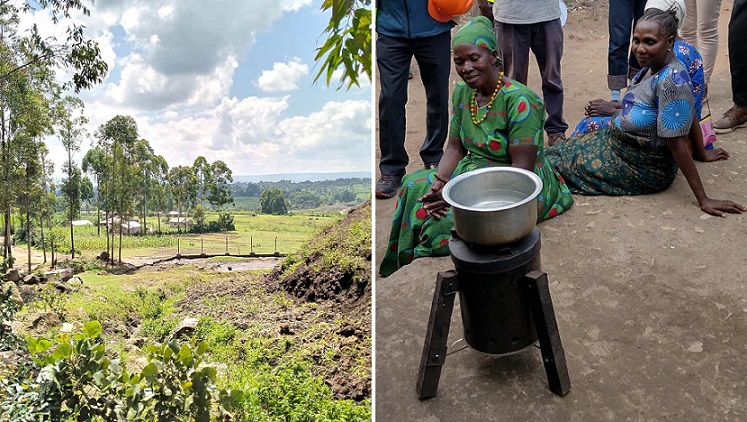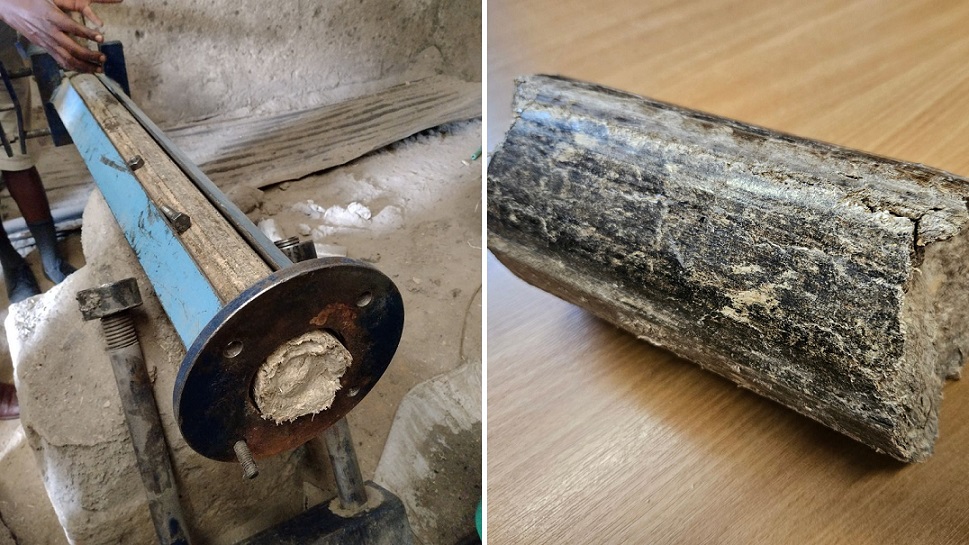
Sugarcane Waste into Clean Cooking Fuel - Chapter 3

Prof John Allport
Professor of Engineering, Department of Engineering and Technology
The School of Computing and Engineering
Sustainable Energy and Innovation
Welcome back to the next chapter of my African Adventure blog! In today's post, I'll delve into the transformative power of sustainable energy and innovation in Kenya's waste management sector. I'll share insights on the significant environmental and health benefits of transitioning to renewable energy sources, and how innovative solutions are addressing local challenges. I'll also discuss the current reliance on charcoal for cooking and how briquettes made from agricultural waste offer a sustainable and healthier alternative. Join me as I explore these impactful changes and their benefits for communities and the environment.
Let’s start off with:
Understanding Sustainable Energy
Sustainable energy refers to energy sources that are not only renewable but also have a low environmental impact and can be maintained for the long term. Key characteristics of sustainable energy include the ability to replenish it naturally (like solar, wind, and hydro power), its minimal negative impact on the environment, and its role in reducing greenhouse gas emissions compared to fossil fuels. This is important for mitigating climate change and its associated impacts such as extreme weather events and rising sea levels.
In many developing countries, diversifying energy sources reduces dependence on imported fuels and enhances national energy security. It can also help them to avoid going through the same carbon-based development as most developed countries, where whole economies have become dependent on coal, oil, and natural gas. By encouraging the use of sustainable energy, jobs in new energy sectors can be created, stimulating technological innovation.
Environmental and Health Benefits
Reducing pollution from fossil fuels improves air quality and public health. This is even more important in areas where healthcare provision is limited and often unaffordable. The shift to sustainable energy sources can have profound positive impacts on both the environment and public health. Sustainable energy sources produce little to no air pollutants. Solar and wind energy, for example, generate electricity without emitting pollutants that cause smog or acid rain, both of which can be major contributors to poor health.
Renewable energy significantly cuts down carbon dioxide emissions, a primary driver of climate change. Sustainable energy systems, such as wind and solar farms, generally have a smaller footprint on land and water resources compared to fossil fuel extraction and burning, causing far less long-term ecological damage.
Reducing reliance on fossil fuels decreases the emission of harmful pollutants (like sulphur dioxide, nitrogen oxides, and particulate matter) that have been proven to cause respiratory and cardiovascular diseases. Cleaner air leads to lower incidences of asthma, lung cancer, and other respiratory conditions, benefiting overall public health.
The Role of Innovation in Addressing Environmental Challenges
Innovation plays a crucial role in the transition to sustainable energy and the broader fight against environmental challenges. Advances in solar panels, wind turbines, and battery storage have made renewable energy more efficient, cost-effective, and more accessible in the developed world. However, in many developing countries, these technologies are still too expensive. There is little benefit in considering the widespread use of electric vehicles in countries such as Uganda for example, where only 30% of the population have access to an electricity supply. Therefore, solutions need to be specific to each locality.
In the case of our current project in Kenya, we aim to address two major issues:
- The ecological and environmental damage from sugar cane bagasse waste, where the rotting bagasse emits methane - a potent greenhouse gas, and the leachate runoff from rainwater falling on the bagasse is highly corrosive, polluting the local watercourses that serve as the main source of drinking water.
- Providing a more sustainable alternative to charcoal for cooking. In Kenya, around 95% of the population rely on either wood or charcoal for cooking and heating due to its accessibility and low cost. Much of this is obtained through illegal logging, either at small scale by individual households, or by charcoal producers.

Both of these issues require a change to current processes, however they have to be approached in a way that is in itself sustainable and appropriate for the locality. This requires a sympathetic approach, co-developed with the local businesses and universities, to ensure that the solution is then owned and repeatable locally without needing ongoing external influence. This is why the African Agriculture Knowledge Transfer Partnership, where a UK university teams up with an African university and company to develop a solution to a problem, is so appropriate in this case.

Current Use of Charcoal and the Impact of Briquettes
Charcoal production involves the burning of wood in an oxygen deficient atmosphere, leading to significant CO2 emissions. When used for cooking in poorly ventilated spaces, charcoal causes indoor air pollution, leading to respiratory problems and other health issues. Briquettes, made from compressed biomass residues (such as agricultural waste), offer a more sustainable alternative to traditional charcoal. They utilise waste materials that would otherwise contribute to pollution. Briquettes burn more cleanly than charcoal, reducing indoor air pollution and associated health risks. The production of briquettes also creates jobs and provides income for local communities, fostering economic development. This shift from charcoal to briquettes exemplifies how sustainable practices can benefit both the environment and local communities.

In summary, sustainable energy is pivotal for environmental protection and public health. Innovations are key to overcoming environmental challenges, and the shift from charcoal to briquettes exemplifies how sustainable practices can have widespread positive impacts. By embracing sustainable energy and fostering innovation, we can create a healthier, more sustainable future for all.
Thank you for reading and joining me once again on this journey toward sustainable energy and innovation in Kenya. I appreciate your interest and support. Stay tuned for my next blog, where I'll dive into the technology behind these innovative solutions and explore how they are making a real difference. Don't miss it!
Catch up on previous blog posts: